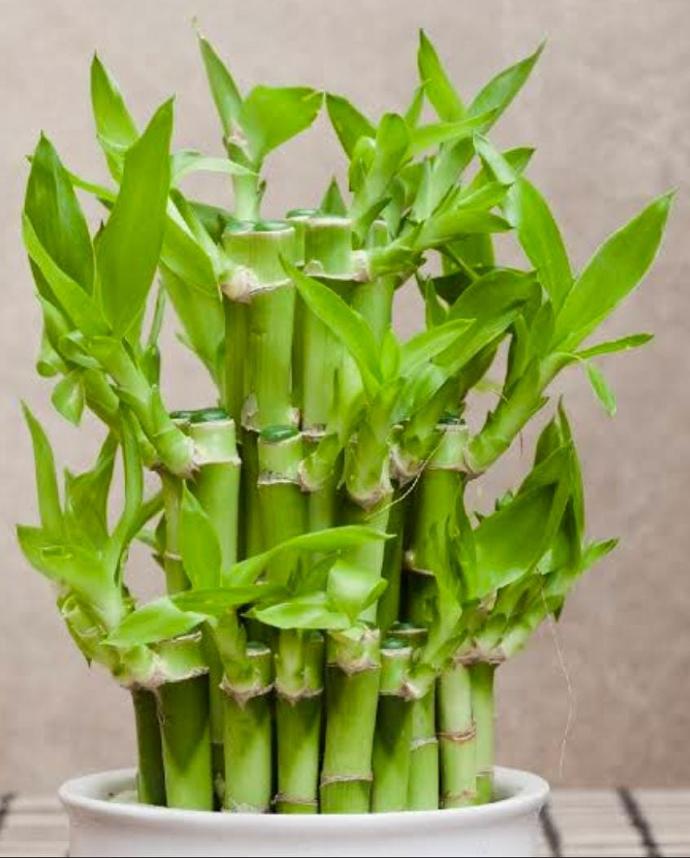Lucky bamboo green Plant
Lucky Bamboo Green, a variety of Dracaena sanderiana, is an indoor plant. Plant in well-draining soil or water-filled containers. Provide bright, indirect light. Keep the soil consistently moist or water-filled. Pruning helps control its size and shape. 
Suggested Grow Media or Potting Mix ?
50% loamy soil, 30% compost, 20% sand
Suggested Fertigation/Fertilizers
Fertilize every 4-6 weeks with a balanced, water-soluble fertilizer.
Habit
Perennial
Height
1 to 1.5 m
Growth
Slow
Soil
Well Drained, loamy
Shade
Indirect light to shade
Moisture
Moist
Edible
No
Medicinal
No
Origin
Africa
Climatic Condition
Tropical, Subtropical
Temperature (°)
20°C to 30°C
Humidity (%)
60% to 80%
Potting media
50% Loam, 40% Sand, 10% Compost
Fertilizers
Organic Fertilizer
Watering
Regular watering
Plant Weight
0.2 to 0.5 kg
Flowering Time
Spring to Fall
Soil Ph level
6.0 to 7.5
Water Ph level
6.0 to 7.0
Soil EC
0.4 to 0.6 mS/cm
Yield Per Plant
1 to 2 kg per plant
NPK ratio
03:01:02
life Span
3 to 5 years
Health Benefits
Ornamental, Air-purifying
Common Diseases and Remedies
Flecking dracaena , Fusarium leaf spot .
White to yellow spots near their tips of leaves , Reddish to tan spots with wide yellow holes .
Maintain moderate Temperatures , avoid overhead watering .
What Is An Lucky Bamboo Plant ?
Also known as Dracaena sanderiana or ribbon plant, lucky bamboo is not actually bamboo but a member of the Dracaena genus. It is a popular indoor plant with a distinctive appearance and symbolism in feng shui and cultural traditions. Lucky bamboo has long stems with bright green leaves in clusters or spirals, often grown in water-filled containers with decorative rocks, bringing good luck and positive energy based on feng shui beliefs.
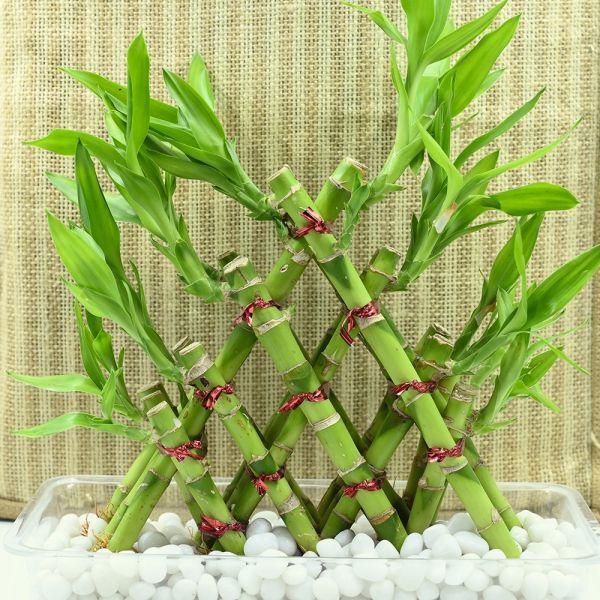
What Are The Different Types Of Lucky Bamboo Plants?
1. Standard Lucky Bamboo
It has straight green stems and vibrant green foliage, often arranged in water in various styles like spirals or braids.
2. Curly Lucky Bamboo
Features naturally twisting stems for a unique appearance, used in decorative arrangements.
3. Variegated Lucky Bamboo
Leaves with streaks of lighter or darker green create an elegant contrast with solid green stems
4. Lucky Bamboo Towers
Tall, slender plants with multiple vertical stems, used for vertical accents in interior design.
5. Miniature Lucky Bamboo
A smaller version of the standard plant, suitable for smaller containers or terrariums.
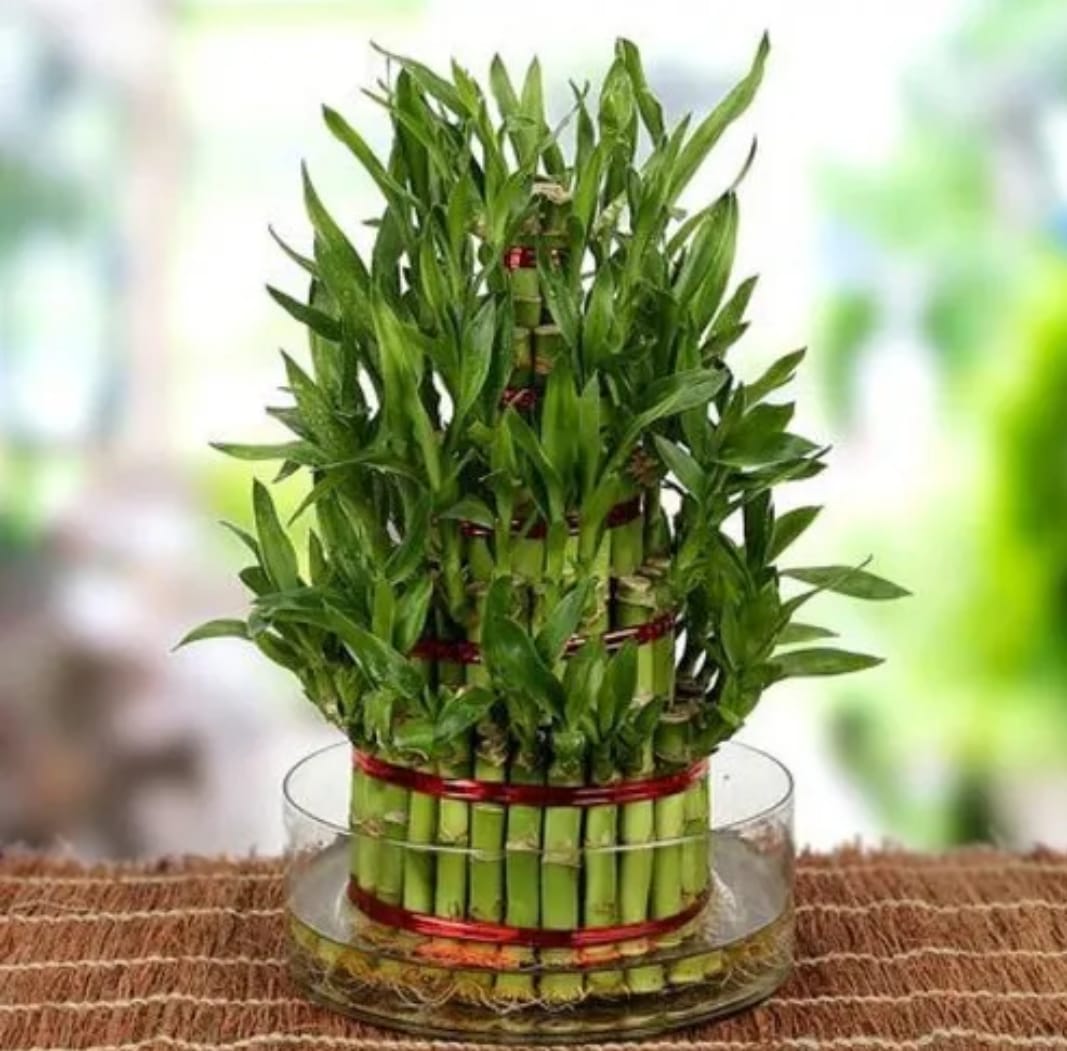
How to care for Lucky Bamboo Plants ?
1. Location
Choose a location that provides enough space for the plant to grow and spread out comfortably. Consider the mature size of the plant when selecting its placement to avoid overcrowding and ensure proper air circulation . Place your lucky bamboo plant in a location where it can be easily accessed for watering, pruning, and maintenance. Avoid placing it in areas where it may be difficult to reach or where it could be accidentally knocked over or damaged.
Lucky bamboo can be grown in water or soil. If growing in water, use a container with enough depth to fully submerge the roots. If growing in soil, choose a well-draining potting bamboo plants can vary in size, from small tabletop arrangements to larger floor plants.
2. Sunshine
Lucky bamboo prefers bright, indirect sunlight. Avoid placing it in direct sunlight, as this can cause the leaves to burn. If growing indoors, place the plant near a window where it can receive plenty of natural light, but with some protection from direct sun.
3. Soil
If growing lucky bamboo in soil, repot the plant into a slightly larger container with fresh potting mix every 1-2 years to provide room for growth and refresh the soil.
4. Hydration
Keep the roots of lucky bamboo submerged in water at all times. Use distilled or filtered water to prevent mineral build-up in the container. Check the water level regularly and top it up as needed to ensure the roots remain covered.
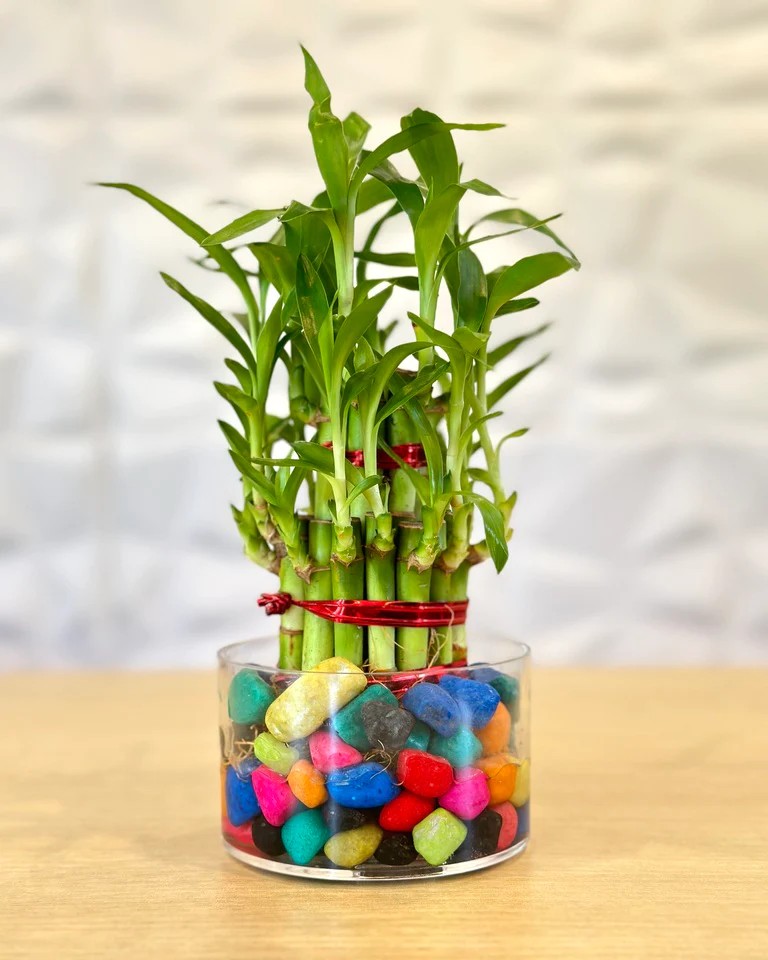
5. Nourishment
By providing your plants with the proper nourishment through balanced soil, fertilization, organic matter, mulching, adequate watering, micronutrient supplementation, and pH management, you can promote healthy growth, vibrant foliage, and abundant blooms in your garden or indoor space. Regular monitoring and adjustments based on plant needs and environmental conditions will help ensure your plants receive the nutrients they require to thrive.
6. Issues
Yellowing leaves may suggest too much water, while brown leaf tips could mean not enough water. Algae growth is possible if the plant is in direct sunlight or if water is stagnant. To prevent this, relocate the plant to indirect sunlight, change the water every 1-2 weeks, and clean the container periodically.
What are the Benefits of Lucky Bamboo Plants ?
Yes! Lucky bamboo has various benefits besides its beauty. Lucky bamboo is thought to bring good luck, wealth, and positive energy based on feng shui and other cultural beliefs. Many people think that having lucky bamboo at home or work can attract good vibes and repel negativity.
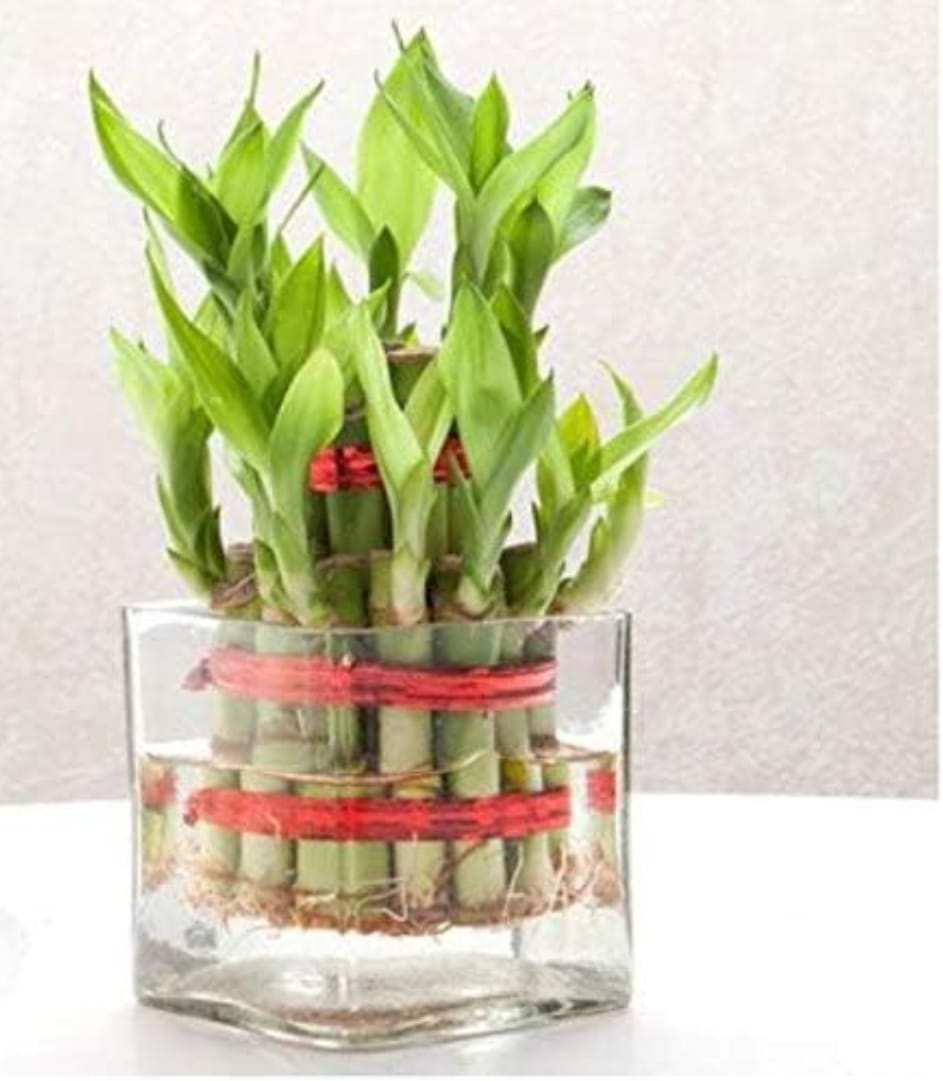
FAQs About Growing Lucky Bamboo
1. What symbolism does lucky bamboo have?
Lucky bamboo symbolizes good luck, prosperity, and positive energy based on feng shui beliefs.
2. How is lucky bamboo typically cultivated?
Lucky bamboo is commonly grown in containers of water with pebbles or rocks to support the stems.
3. What are some common issues with lucky bamboo?
Common problems include yellow leaves, root rot due to overwatering, and tip burn from too much sunlight.
4. How can algae growth in lucky bamboo water be prevented?
Algae growth can be stopped by keeping the container away from direct sunlight, changing the water regularly, cleaning the container to remove algae, and avoiding excessive fertilizer.
5. Is lucky bamboo related to actual bamboo?
No, lucky bamboo is not a bamboo but belongs to the Dracaena genus in the Asparagaceae family.

